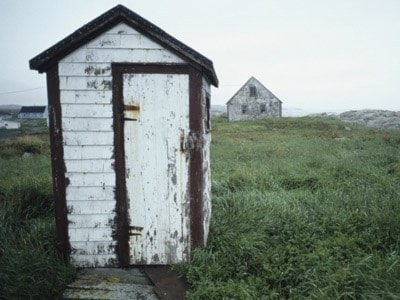Controversial project would see large-scale application to local farmland
The Capital Regional District and Saanich Peninsula Waste Commission may be embarking on a controversial project that no amount of perfume will be able to cover — unless residents raise a stink first.
Sewage treatment is back in the news again, but this time the CRD will decide whether to abandon a ban on the land application of biosolids and support a plan put forward by the Saanich Peninsula Waste Commission to apply sewage waste to local farms — a move that few grocery stores in the country will support, and one that residents have tuned out until it’s almost too late.
“What nobody, including CRD staff, is saying is that there is no risk to using biosolids. Research shows harms ranging from small to significant, and I worry about what that means for public health and our environment,” says CRD director and city councillor Philippe Lucas. “This is really the CRD deciding the fate of local farmlands and food security.”
Currently, the CRD offers all local area residents a Class-A biosolids-based “soil enhancer” compound called PenGrow — in lay terms, human and industrial sewage sludge. The fertilizer has been offered for free for the last 10 years, as part of the Saanich Peninsula Wastewater Commission’s “beneficial reuse strategy” for 10 per cent of the waste they process. Although the commission operates at arms length from the CRD, the biosolid fertilizer is promoted by and takes place on CRD property at Hartland Landfill. Despite a CRD ban on the land application in November 2009, last month the Saanich Peninsula Wastewater Commission passed a motion to begin a pilot project that would see large-scale biosolid application to local farmland.
“Here’s what farmers weren’t told at the onset of this project: every major grocery store chain in B.C. has a ban on produce fertilized with biosolids. There is no sellability on this project and we’re leading farmers down a dead end road,” Lucas says, adding that the move could even make the CRD and local farmers vulnerable to lawsuits. “At a time when local agriculture and food security are of top priority to farmers and residents of the Island, this is a nightmare and it’s moving us in a horrible direction.”
The CRD has been marketing this biosolid waste with a stamp of approval from the B.C. Organic Matter Recycling Regulation (OMRR), which governs the production, quality and land application of certain types of organic matter. However, Lucas points out that this is easily confused with the Organic Materials Review Institute (OMRI), which lists materials approved for organic use in the U.S.
The kicker: no materials grown with biosolids can be certified as organic — it’s forbidden by all current regulations governing organic certification, and most grocery stores in the country will reject biosolid-grown products as studies have shown that even Class-A biosolids can still contain toxic chemicals, carcinogens, heavy metals, polycyclic aromatic hydrocarbons and pharmaceutical agents.
“What’s important to remember is that there are risks and benefits to using biosolids,” says Glenn Harris, senior manager of environmental protection for the CRD, and lead technical agent on the project. “This is one local and cheap alternative to importing chemicals that can replace nitrogen and phosphorous into the ground, which farmers are asking for. There is a perception of risk, and that’s legitimate, but then there’s risk management and evaluating the pros and cons to make a good decision.”
Lucas passed a motion at a recent CRD meeting to allow all members of the community, along with environmental and food security groups, to share their thoughts at the upcoming May 25 meeting. So far, the Island Chefs’ Collaborative, the Island Organic Producers Association and food security activists have asked to speak. Lucas hopes the CRD will take a firm stance against the land application of biosolids.
North Saanich Mayor Alice Finall says that her mind won’t be made up regarding the issue until she hears all sides of the argument. Lucas has been asked to bring in specific examples of scientific research, along with the credentials of those scientists doing the research.
“No one’s taking a position to say whether this will be good or bad because there are too many unknowns; this is just a pilot project,” Finall says. “One of the growing needs in our community is the amendment of soil for farm land.”
Other options for the disposal of biosolids have been considered, including sending the solids to fuel cement kilns.
“What’s so disturbing about this is that if one farmer decides to use PenGrow and his neighbour decides not to, what’s there to stop runoff, human and animal tracking, or wind dispersal from affecting both fields?” says Lucas. “We are one of the few places left in our province that has been untouched by the large-scale land application of biosolids; let’s keep it that way.”
For those who want to get involved or sign the petition, visit http://bit.ly/kJuzXz or the “Biosolid Free B.C.” Facebook page. To speak at the 10 a.m. May 25 CRD meeting, sign up two days in advance via crd.bc.ca.
